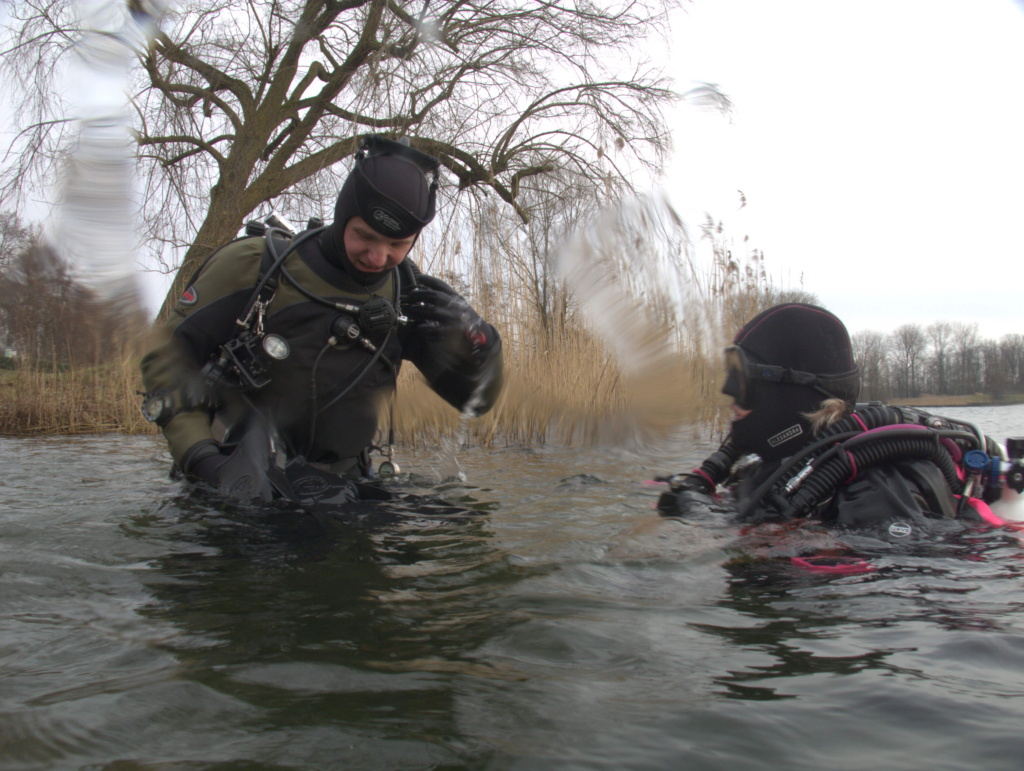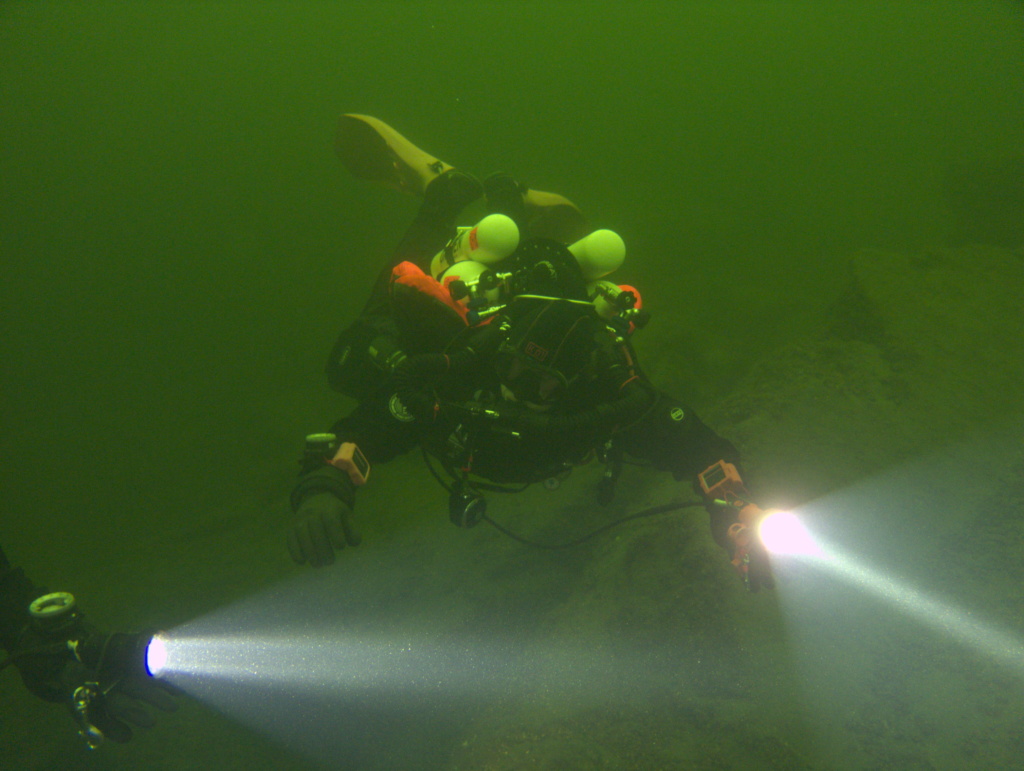January 19th it was te 15th edition of Cave and Wreck Night. I skipped a few editions, but I was poised to go this time.
It certainly was a blast, meeting old friends again.
We all missed one key person though. We honoured Cees den Toom for a brief moment.
Speakers of the evening hosted by JP Bresser.
* Anton van Rosmalen: Spoke about his diving carreer with a healthy dose of humor and a look into the future of diving with scooters using Artificial Intelligence. I just wonder what happened if he used the abbreviation DPV instead of scooter though.
* Sami Paakkarinen: Talked about the importance of preparations to rule out “bad conditions”. Diving Norwegian caves in winter is safer than in summer due possible floodings. In the winter it’s no surprise an expedition is done in very cold conditions. Also a short anekdote on the rubber dive suits (Loitokari). These suits remind me of the men who worked and entered the nuclear reactor of Tjernobyl after the melt down.
* Mario Arena discussed with JP Bresser the area where the Battle of the Egadi took place and the artifacts that are found there, but also fabulous looking WWII wrecks with the German cargo still in them.
* Osama Gobara: Talked about Mexican inland caves, there remoteness and sometimes difficult entries Even entries with zero visibility and a high load guano (bat poo) to enjoy a pristine never explored cave system. He maps caves the old fashioned way, but very meticulous.
All in all it was a great evening and I must say, wreck diving is more appealing to me than cave diving. It becomes clear to me that more and more projects you can participate in, require rebreathers as the unexplored wrecks lie deep and caves are penetrated further and further. Pushing the limit simply requires different equipment, which is sometimes modified to fit the purpose, especially in cave exploration.
It’s the choice of revamping the kitchen or buying a small van, which would serve my wife and me, or a rebreather course and purchase just for me. Take a guess what my wife would say.

THE DAY AFTER , JANUARI 20th, 2024




Berend-Jan arranged a dive with Gerrit and Alexandra both coming from Germany. The choice fell to the Haarlemmermeerse Bosplas.
I just happened to know the way a bit there.
The sun shone nicely and met Gerrit and Alexandra. A bright pink hit my eye when I took a look at and in Alexandra’s van.
Fins, rebreather wing, Primary light… all pink, but a black drysuit.
Stans van Hoek is not alone!
My orange carrot drysuit also stands out, which is the main purpose of wearing bright colours.
Pink would be a bit too much for me though.
Gerrit’s also has a carrot suit, but isn’t wearing it today. He’s in black with green touches and Berend-Jan is always in his fashionable black suit with red touches.
After a short briefing we enter the crystal clear water.
Happy Berend-Jan on the left.
We plan to visit all seven Project Baseline main underwater stations, which are along a nice touristic route anyway.
First we go the photo station MP1 at 3 mtr depth to do a visibility reading. This is just a simple piece of rope, which was tied there since December 4th, 2011. The intention was to let Alexandra do the backward swim to measure visibility, but the tape measure is giving a bit of a problem. I’m fiddling to get it bolt snapped to the station rope, but that fails.
So I give the tape measure to Gerrit while Berend-Jan is filming and I get my spool with markings. To spare Alexandra the effort, I roll out the spool and keep my eye on the Secchi plate. My goodness, it takes an 11 meter back kick run, when the Secchi black and white surface finally disappears. Both Gerrit and Alexandra who swam back with me saw what that looked like. Reeling it in certainly goes a lot faster.
I totally screw up by dropping my spool once rolled up and boltsnap secured to the spool.
It gently sinks to the bottom. I want to leave it there as we will go down there anyway and skip the visibility readings on 6 and 9 mtr depth. Alexandra doesn’t know that and goes after the spool.
Mind you that is quite a challenge dropping like a stone with a rebreather and hit the breakes on time to prevent a plunge in the soft sediment.
Gerrit is with her and she perfectly managed the way down.
I just take photos of the station MP2 at 6 mtr depth and MP3 at 9 mtr depth and the bottom of the concrete support pile.
It’s time to go further and go to the next station being the Sail boat wreck called “Sale”. We pass the tallest clay boulder and take a look at the Caddy.
Gerrit picks up a piece of litter along the way. No fish in or near the wreck as I take the station MP8 photos there. The only visible living things in the mini forest are small freshwater sponges. From there we can already see the cable reel and we notice a fishing line entangled in the reel. In no time the crayfish lure is handed to me, while a wind up the line around my wetnote.
Everybody is still okay and we proceed to station MP4 passing the always impressive looking clay boulders.
A pretty big dead perch lies there and its eyes are just a bit troubled. Many Amphipods feast on it.
After taking a photo of station MP4 (A metal quadrant) we turn around at about 50 minutes into the dive.
From afar station MP7 appears. We can actually see it’s position.
On the fly station MP5 is being photographed and we head for the exit point.
After 66 minutes we conclude the dive and enjoy a nice cup of coffee, stroopwafels and gevulde koeken.
I’m really thankful Berend-Jan arranged this and it seems Gerrit and Alexandra enjoyed it too.
After that I also collected some plankton and measured the Secchi depth (Vertical visibility) Turned out I could still see it from the surface at 11 mtr depth while it layed on the bottom. I had from move from the usual spot to a deeper part to read a visibility of 13 mtr.
While Berend-Jan waited at the shore I trawled the plankton net to the shore. It’s no surprise it hardly contains any algae, but it does have some copepods in it.




